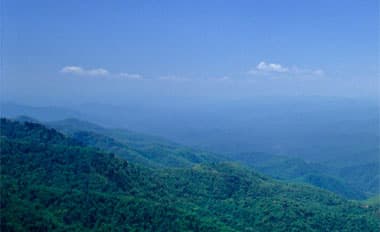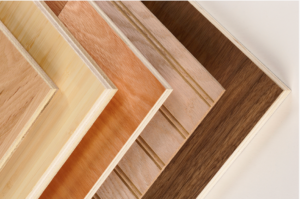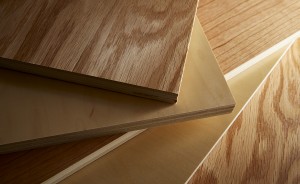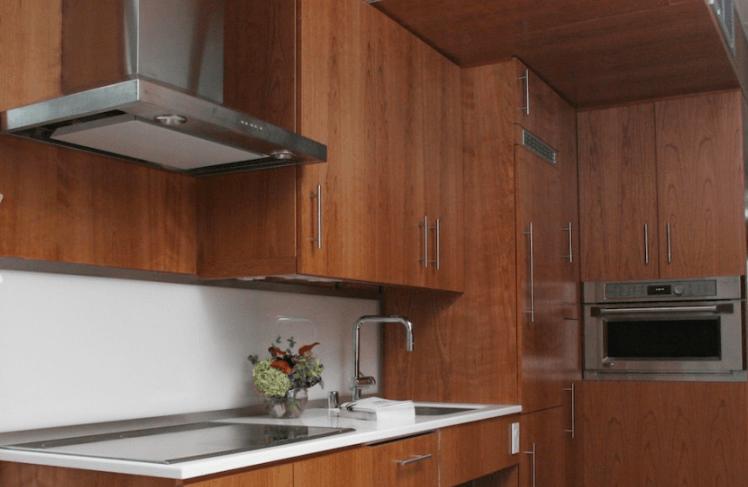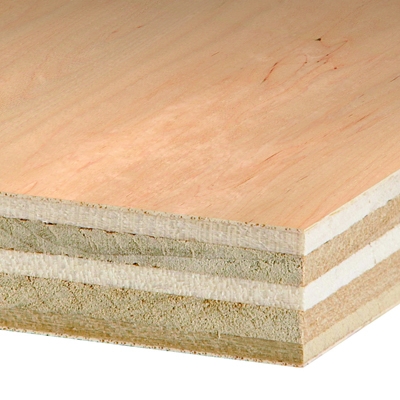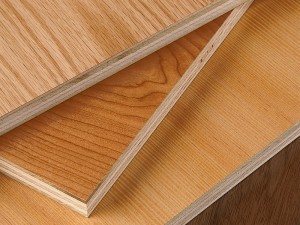A Complete Guide to Choosing Plywood
- July 2, 2019
- •
- by Columbia Forest Products
Plywood is a staple material for professional builders, architects, designers and DIYers alike. These versatile panels are used for a number of different projects, from wall sheathing, roofing, and sub-flooring, to cabinetry and furniture. Plywood is readily available at local retail stores and specialty wholesalers, with most offering a wide selection.
Types of Plywood
Gaining better knowledge of plywood and the types of plywood available will not only make shopping easier, but it will also ensure that your finished project will have stability, structure, and beauty.
There are two main types of plywood: softwood plywood and hardwood plywood.
They are both are made of multiple plies (layers) of thin wood veneer that have are glued under pressure within a chamber set to a high temperature to ensure maximum adhesion and strength.
Softwood Plywood
Softwood plywood comes in different wood species, but fir and pine are most common. Softwood plywood is ideal for projects where cost must be kept down or where the look of the plywood is not a priority, such as with wall sheathing or subflooring. Hardwood plywood is more expensive but is considered more visually appealing.
Hardwood Plywood
Hardwood plywood can differ from softwood in how the panels are constructed. Hardwood panels may have multi-ply layered construction, like softwood plywood, but often, you’ll find that they’re instead constructed with one-piece composite wood cores.
The plywood face and back then feature a thin decorative hardwood veneer which can be stained, sealed or painted, depending on the preferences of the customer.
Hardwood plywood is intended for interior, non-structural applications like for furniture, cabinetry, finished interior walls and similar projects. Typical hardwood plywood face species include oak, walnut, maple, hickory and many more.
Plywood Application
Plywood has many uses, so you can really use whichever type you deem fit based on the project you’re building. However, to make shopping for plywood easier, most suppliers or lumber stores will break down their plywood in basic categories.
Structural
Structural or exterior plywood, like CDX plywood, is designed for permanent use in building structures like beams, subfloors, bracing for walls or roofs, and in any other instance where strength and stability are vital. Structural plywood is often quite thick, made of softwood species and without an attractive finish. The majority of structural plywood is moisture-resistant.
Exterior
Exterior plywood is going to be fairly strong, but most importantly, it’s designed for water-resistance and weather exposure. Adhesives used in Exterior plywood withstand water and harsh sunlight for longer without degradation. However, Exterior plywood that will be directly exposed to the elements will still need a surface treatment (e.g. waterproof sealant) as it is designed to be covered with siding, flooring, roofing, etc.
Interior
Interior (decorative) plywood is usually chosen for its looks rather than its strength. You’ll find Interior plywood ideal for household projects like wall paneling, ceilings, and ceiling treatments (e.g. coffered ceilings) cabinets and furniture. Interior plywood should not be used for structures nor should it be used outdoors.
If you’re looking for exceptionally beautiful look, consider skipping softwoods and selecting an interior, hardwood product instead. Hardwood plywood is a budget-friendly way of getting a stunning real wood finish without the price tag of solid wood.
Hardwood Plywood Cores and Veneers
As mentioned above, hardwood plywood comes in a variety of different cores. The core materials offered by Columbia Forest Products include:
- Veneer Core PureBond: An all-wood core made of plies of wood assembled with an EPA award-winning formaldehyde-free, soy-based technology.
- Classic Core: Made of smooth, voidless (no gaps in inner layers) MDF crossbands under the face veneer. Lightweight and strong, with excellent surface smoothness.
- Particleboard: Particleboard is made of wood particles bound together with adhesive. It is relatively heavy compared to veneer core options.
- MDF: Medium Density Fiberboard. MDF is similar to particleboard but features a smoother finish as the wood particles are smaller. It’s heavier and denser than particleboard.
- Europly Plus: European style panel with a veneer core, often used when an “exposed edge” treatment is desired.
The core you choose depends on a few factors. If budget is a concern and weight is not a factor, typically particleboard or MDF is chosen. MDF is a great alternative to particleboard if you need a very smooth finish, but it’s important to know it’s heavier.
If a very high-quality finish is needed or you want to eliminate the need to finish edges, then Europly Plus is a solid choice. Lastly, if a light weight, sturdy, moisture-resistant material is desired, a PureBond veneer core material makes a great choice.
Columbia Forest Products offers a variety of face veneers to compliment their cores. You can find essentially any North American hardwood species available as a veneer. Visit the Columbia Forest Products website for examples of veneer options.
Plywood Grades for Faces and Back
Grade refers to the relative visual quality of the plywood’s face and back. The face of the plywood is often graded by letter while the back is graded by number. The higher the grade, the higher the price of the plywood.
For a plywood face, you’ll find a grade range of “AA” to “E”. Plywood faces with an “AA” grade are exceptionally high quality and ideal for custom cabinetry, furniture or similar projects. An “A” grade is just a step below and is a common grade for the higher-end plywood options. “B” grade plywood is often referred to as ‘cabinet grade.’ Grade “C” is still useful for finished work, like the interior of cabinets or shelves. Many people use “D” or “E” grades for areas that won’t be seen, or that will be painted.
For the plywood back, you’ll find a range of 1 to 4, which are generally matched to the relative quality of the face. The grade of the plywood might be indicated on panel edges. Grades are typically expressed with the face grade first, followed by the back grade, such as “A-1” or “C-3”.
Quality Hardwood Plywood for Your Projects
By understanding the various types of plywoods and how they’re graded, you’ll be able to more accurately purchase panels that will be best suited for the project at hand.
If your project calls for high-quality hardwood plywood, contact Columbia Forest Products to find the best wood for your project.




